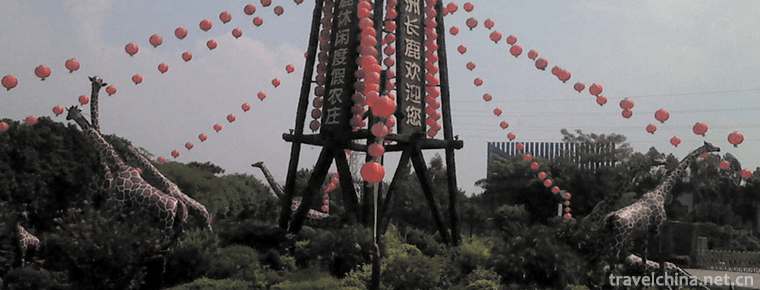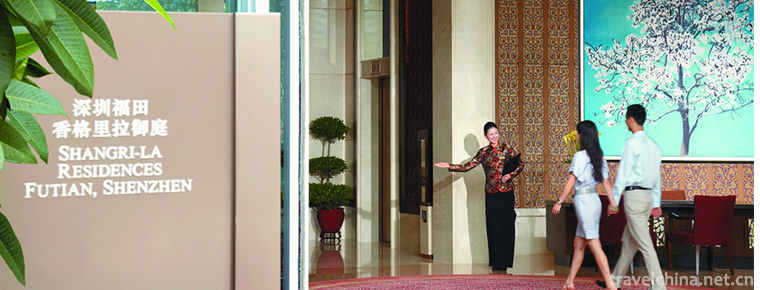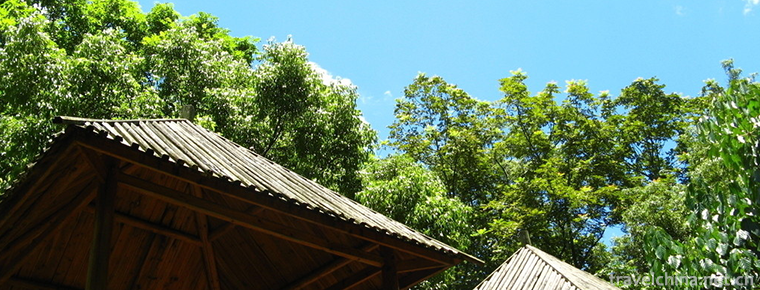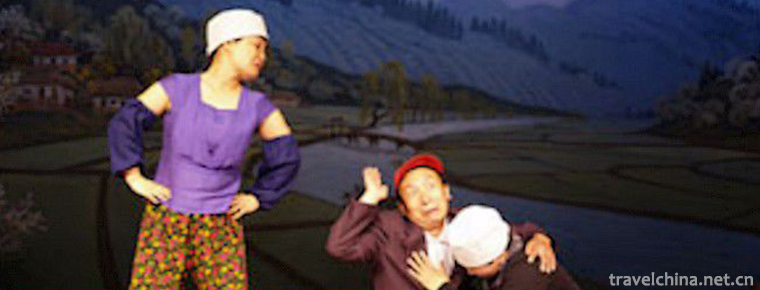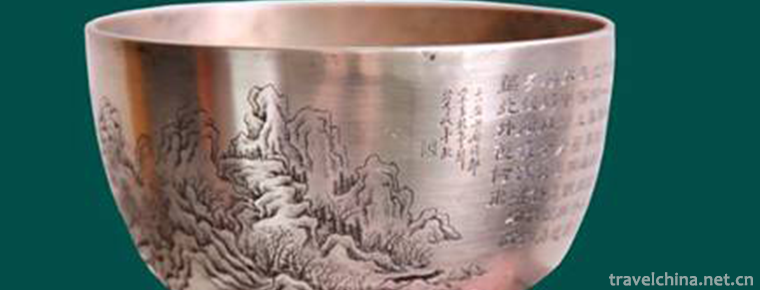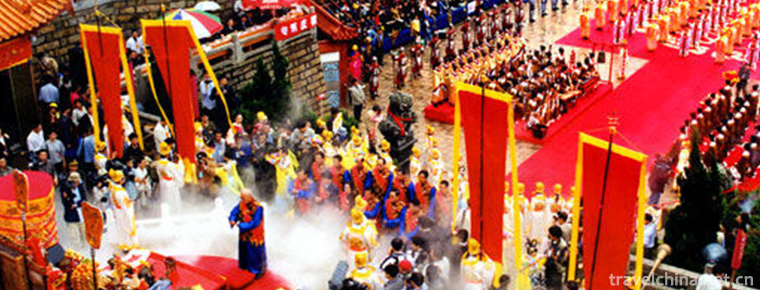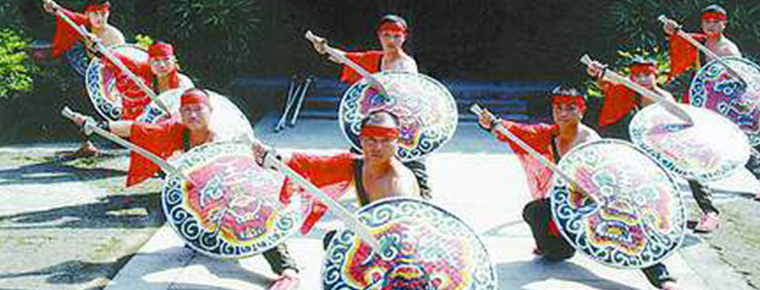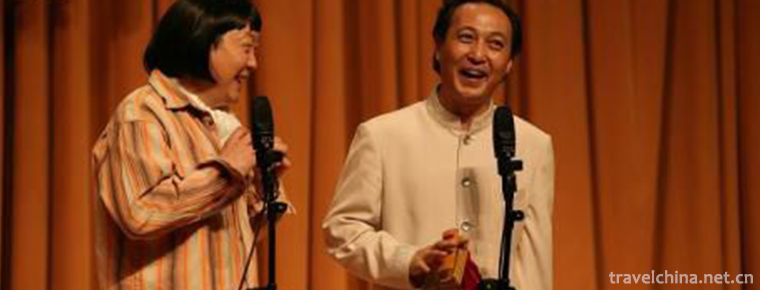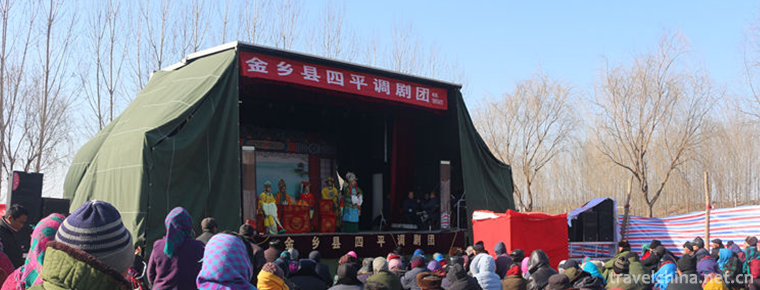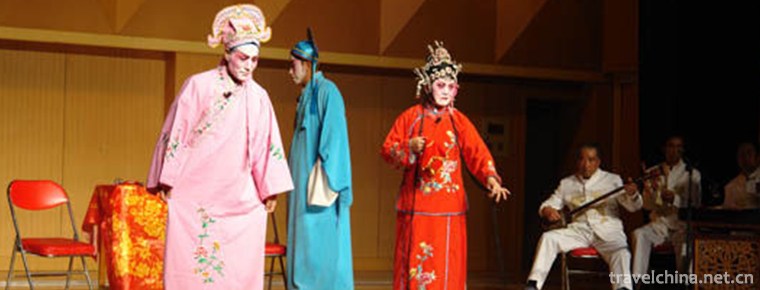Ancient town of Guandu
Ancient town of Guandu
Guandu Town, located in the Southeastern Suburb of Kunming, is one of the famous historical and cultural ancient towns in Kunming. Guandu ancient town gate (big archway) is located in the southeastern suburbs of Kunming 8 kilometers, located in the North Bank of Dianchi Lake, the lower reaches of Baoxiang River, covering an area of 17 square kilometers. Guandu Ancient Town has many cultural monuments and rich cultural landscape. Within less than 1.5 square kilometers, there are many landscapes in the Tang, Song, Yuan, Ming and Qing Dynasties, such as Wushan, Six Temple, Qige and Eight Temple.
brief introduction
Guandu ancient town gate (big archway) is located in the southeastern suburbs of Kunming 8 kilometers, located in the North Bank of Dianchi Lake, the lower reaches of Baoxiang River, covering an area of 17 square kilometers. Guandu Ancient Town has many cultural monuments and rich cultural landscape. Within less than 1.5 square kilometers, there are many landscapes in the Tang, Song, Yuan, Ming and Qing Dynasties, such as Wushan, Six Temple, Qige and Eight Temple. Guandu Ancient Town is famous for its profound history and culture. Although historical and cultural monuments have been damaged, important historical and cultural relics have been preserved. The courtyard walls in the ancient town, which were made of snail shells and rammed with clay, still stand in the wind and rain. It is rare that the earth-roofed dwellings of one hundred years still exist. As an ancient town with a long history, Guandu used to be a famous ancient ferry in central Yunnan and one of the famous historical and cultural towns in Kunming. In Tang and Song Dynasties, Guandu was a big market town on the East Bank of Dianchi Lake. In Yuan Dynasty and Kunming, counties were set up at the same time. Ming and Qing Dynasties had become a town with well-developed commerce and handicraft industries. In the past, Guandu was crowded with merchants and businessmen, and its tall pagodas shone brightly. There were five mountains, six temples, seven pavilions, Eight Temples and many human landscapes. Many cultural architectural sites are still preserved today.
Guandu Town, located in the Southeastern Suburb of Kunming, is one of the famous historical and cultural ancient towns in Kunming. Guandu, formerly known as "Cave", is a fishing village with screw shells piled up like mountains on the shore of Dianchi Lake. Here the clouds and water are clear, the wind and waves are smoky, and the scenery is picturesque. As early as the Tang Dynasty, "Cave" was the ideal place for Prince Nanzhao to stop when he visited Dianchi Lake. During the Song Dynasty, from about 1180 to 1900, the practice of stationed in Shanshan and Shanshan was a lifetime experience, often traveling by boat to caves. Gaosheng's boat rope was on the shore, so he named the cave Guandu. Gao seems to have a special fondness for Guandu. He simply divides Guandu into his own governing place, places Guandu County in Wodong, and builds a city pool.
Guandu, as a scenic and tourist attraction, has become a treasure land for noble officials to build palace villas and famous people to visit. "How many pedestrians come and go, horseshoes break through the five frosts", "here wine curtain invites me to be drunk, boat drums send me home", the ancient Guandu immersed in the sound of a silk bamboo orchestra.
Of course, the first people to stop here were not only Nanzhao, the princes and nobles of Dali and their attendants, but also the religious culture that accompanied them. The earliest temples built by Guandu were the Tuzhu Temple which was built in Tang Dynasty to worship Mahajaro and the statutory temple in Song Dynasty. Nowadays, the main hall of Tuzhu Temple is large in size, with its front porch and back mansion, and its seven sandalwood beams, especially the Qing-style nine-step four-warp truss arch under the front eaves of the main hall, which is magnificent in scale and prosperous in beauty. The statutory temple is not large in size, but has a higher lift. The bucket arch has a 45-degree wing arch and is rich in decoration. The exterior eaves of the front are ornately decorated, the eaves of the Ming Dynasty are decorated with Shuangfeng Chaoyang carving, the eaves of the pillars are decorated with wood carving Qilin, and the four corners of the beams are carved into Phoenix shapes, which still retain the style of the Song Dynasty buildings and have higher architectural artistic value. They are provincial cultural relics protection units.
Historical origin
The Miaozhan Temple, the first of the six temples in Guandu, was built from the Yuan Dynasty to the twenty-seventh year of the Yuan Dynasty (1290). It was completed in 1295 and then collapsed due to flooding. It was built in the center of the ancient town in 1325. There are two 13-storey square brick towers with dense eaves in the East and west. Later, the West Tower was destroyed by the earthquake, while the East Tower remains to this day.
Of course, the most famous religious building in Guandu ancient town is the Diamond Pagoda in front of Miaozhan Temple, a national key cultural relic protection unit.
When the Miaozhan Temple was rebuilt in the second year of Shun2 (1457) tomorrow, "it is the rule of rebuilding a floating map in front of the temple". This "rule of floating map" is the Diamond Throne Pagoda. The advocates of the King Kong Pagoda were Mu Lu, the chief soldier of Yunnan Province, who was guarded by Dr. Tejin Ronglu. The investors were Luo Qi, the eunuch who guarded Yunnan Province. They were all the leading figures who ruled Yunnan at that time. The purpose of the new stone pagoda is to "build meritorious virtues", "seek to extend life", "follow the customs and stabilize the people's hearts", "and"cure without cure". Here, the saying "follow the custom and stabilize the people's hearts" refers to the folk legend that there are screw weirdness in the wind and waves, so the tower is built to town. Among the more than ten existing diamond pagodas in China, the diamond pagoda of Miaozhan Temple has the earliest construction time and the longest history. This diamond pagoda, which reflects the Buddhist spirit of "tolerance is great" and "openness and closeness are simultaneously" with the two brick pagodas of Miaozhan Temple, is also the core of Guandu Town's ancient architectural complex, which is composed of scattered high and low buildings and magnificent layout of characters.
The Diamond Throne Pagoda was originally a memorial pagoda of Buddha's Dharma on the Nilian Chan River in Gaye City, India. It is called "the Great Pagoda of Buddha Gaye". Also known as the "altar city", that is, "altar". A small square tower is built at each corner of the tower, and a tall conical tower is arched in the middle. The five pagodas represent the Five-Way Buddha, the central pagoda represents the Great Sun Tathagata, and the four-Thursday building clockwise represents the Azon Tathagata, the Baosheng Tathagata, the Mita Tathagata and the non-empty Tathagata.
The Guandu Diamond Pagoda is composed of two parts: the base and the tower body. The plane of the base is square, the side length is 10.4 meters, and the height is 4.7 meters. The bottom of the pedestal crosses the air. There are four coupon doors, east, west, north and south, which can pass by pedestrians, carriages and horses. On the base, five towers stand. The main tower with a height of 16 meters is built in the center, and a small tower with a height of 8.84 meters is set at the four corners. The main tower is magnificent and small. The main tower and the small tower are all made up of Xumi seat, tower body, tower neck and tower brake, but they have different styles and styles. The big and small towers are in perfect harmony with each other. The towering and handsome Tasha stands like bamboo shoots springing up after a rain, scrambling to break the earth, with a light and beautiful image and a flying beauty.
Guandu Diamond Throne Pagoda is not only elegant in overall conception, but also reverie. Detailed copper cast stone carvings are also very exquisite. Whether the image of the five kinds of mounted animals on the Xumi seat of the main tower, the four-cornered Vajrayana, or the Buddha statues in the niches, the sculptors are all very delicate and vivid. Four heavenly kings with sword, pipa, Pearl umbrella, flower fox mink and other artifacts on the copper-cast umbrella cover, as well as nine bronze gold wheels with Buddha statues built in the center of the cross-empty tower base, are also exquisitely carved, showing a high level of craftsmanship.
Guandu is the landing of Tibetan Buddhism into Kunming. The stone pagoda of Miaozhan Temple has left a deep imprint on the Tibetan Tan Buddhist pagoda, which is clearly reflected in the Lama pagoda-style pagoda body. Later, the diamond pagodas of Dazhengjue Temple, Biyun Temple and Ciyun Temple in Hohhot were all typical Han multi-storey Miyan Pagodas, the only one in China with Lama Pagoda.
Guandu Diamond Throne Pagoda is full of religious culture and poetic charm of architectural art, giving people spiritual edification and aesthetic enjoyment. Up to now, we have no idea who designed and built this exquisite art masterpiece. History only records the names of the advocates and donors, but this stone pagoda with eternal artistic value is always a monument to their wisdom and talent in the hearts of future generations.
In the Yuan Dynasty, Confucius Tower was also established in Guandu, which had a far-reaching impact on Guandu's children's reading and writing. Later, Wang Sixun, a famous scholar, came out here. Wang Sixun was a scholar in the forty-fifth year (1706) of Emperor Kangxi in Qing Dynasty. He was a scholar in Jiangxi Province. He was a teacher of Emperor Yongzheng in his childhood. Emperor Kangxi had given him ten thousand volumes of books. After returning to his hometown, Wang Sixun built a collection of books. To this day, there still exists a grant hall.
By the Qing Dynasty, Guandu Ancient Town had formed a complex of "Six Temples, Seven Pavilions and Eight Temples" with strong cultural color within the scope of four villages, namely, Luofeng, Xizhuang and Shangyi. These magnificent buildings merge with the natural scenery and form a beautiful picture, forming the so-called eight sceneries of Guandu, namely "Gudu fishing lantern", "Luofeng emerald", "Yuntai moonlight", "apricot nursery shepherd", "Lingyun smoke", "South Yunnan lawn", "King Kong night language" and "pen skyline".
In that year, when I entered Guandu, I saw the boundless water of Dianchi Lake rippling, gull play fish fat, and the vast sky clouds stretching and changing endlessly. In the reed bushes by the lake, there are flocks of wild birds playing. In Luofeng Mountain, hundreds of cypress trees are stacked at the foot of the mountain to the top of the mountain, green and green. The sound of bells in temples and the sound of reading aloud in academies drifted through the clouds and evening rains; the towering eaves and diamond towers pointed directly to the sky, like the master of God waving a large pen, praising the heaven and the earth, and blessing the world. The shepherds play hide-and-seek, play games and are full of childish joy in the large apricot forests along the shore. Tourists write poems, drink alcohol and play games with melodious flute. The streets are busy and crowded. During the temple fair, not only urban residents come to participate in the temple fair, but also residents of neighboring counties flock to the temple fair. The lawn clearing on the west side of Wugu Temple was crowded with people and was very lively, which was far from the comparable of the general market at that time. At night, a series of bright red lanterns rose from the Lighthouse of the ferry, leading the official boats and fishing boats to sail slowly; in the moonlight season, the Yuntai Palace was reflected in the mirror-like pool all the year round, with the breeze blowing and the palace shadows rippling; on the Diamond Bridge, King Kong whispered occasionally.
However, with the passage of time, the lakeshore gradually retreated, and the natural landscape of Guandu changed greatly. Old temples and temples have gradually become old and dilapidated, and some of them have even been demolished. The famous Diamond Pagoda has sunk more than a meter, forming a huge pit. In April 2001, Guandu Ancient Town Cultural Relief Project started. After more than two years of hard work, governments at all levels invested huge amounts of money to raise the 1 350-ton Diamond Throne Tower by 2.4 meters, rebuild the Miaozhan Temple and the Western Tower, repair the ancient buildings such as Confucius Temple, Wu Temple, Giving Books Hall, statutory temple, Tuzhu Temple, Guanyin Temple, upper and lower attic. The traditional houses in the town are being renovated in a planned way. At the same time, folk cultural activities and traditional snacks are gradually restored, and the protection of the natural ecological environment is also being planned. We see an old and young new Guandu, which is linked with a long and splendid history and a bright future.
Ancient town food
Li Jia Maibao beside the Tuzhu Temple and the eyeglass Maibao directly opposite the Tuzhu Temple. Cooking powder, fried potato, roasted stinky tofu, papaya water, pickled vegetables, Guandu bamboo, preserved papaya fruit, etc., "urine" pickled pear, cold rice noodles, cold noodles, cold powder, pickled vegetables, soybean curd with milk, small pot rice noodles, pickled chicken feet, sweet liquor, grabbing powder, etc.
Non heritage in ancient towns
Yunnan Weiqi Factory: In the spring of 1980, the school-run factory of Kunming No. 12 Middle School was renamed Yunnan Weiqi Factory, which produces "Yun" character Weiqi. Yunnan Weiqi Factory produces clouds with slightly convex front, flat bottom, natural arc, simple and simple, and comfortable handle. Baizi is crystal clear like jade, black and translucent like natural jade. In 2012, it moved to Guandu ancient town and founded Yunzi Chess Hall, which is mainly used to receive high-end Weiqi competitions, high-quality Yunzi exhibitions and Yunzi commodity exhibitions. Yunzi Chess Hall is unique in its construction. The Yin and Yang Taiji maps inlaid with black and white clouds can be seen in the entrance, and the chess floor paved with black and white pebbles can be seen in the hall. Yunzi Exhibition Center is a collection of precious clouds of various styles. Yunzi was awarded the provincial intangible cultural heritage.
Inheritance Base of intangible cultural heritage: Completed in January 2013, it belongs to public welfare facilities and is open to the public free of charge throughout the year. Since 2011, three national joint exhibitions of intangible cultural heritage have been held in this area. The base can be summarized as two museums and three centers: Guandu Folk Customs Museum, Guandu Folk Painting Museum, intangible cultural heritage exhibition center, intangible cultural heritage training center and Guandu District intangible cultural heritage protection center. At present, the base has been licensed as "Yunnan Cultural Activities Base Art Demonstration Point", "Kunming intangible cultural heritage heritage heritage base", "Guandu Folk Painting Museum", "Guandu District, Airport Economic Zone intangible cultural heritage heritage heritage heritage base" and "Guandu District, Airport Economic Zone national folk traditional cultural talent training base".
Wutong Traveling Silver Seminar: Mr. Jin Yongcai, the successor of Wutong Traveling Silver, invested 1.2 million yuan in August 2010 and established a 247 square metre Wutong Traveling Silver Seminar in Guandu Ancient Town. Up to now, 286 trainees have been trained and more than 80,000 visitors have been received annually. At present, Wutong Walking Silver is rated as the national intangible cultural heritage. Silver-moving bronze is a traditional folk metal production technology. Silver-plating is the process of silver-moving bronze. Silver-moving bronze is the process of carving exquisite decorative patterns on copper embryos, then silver-plating or gold-plating inside the engraved decorative patterns, and then treating the surface of copper embryos into black, so that silver (gold) glittering brilliant decorative patterns can be set off on the solemn and deep black bottom, making the handicraft appear graceful and magnificent. It has exquisite shape, exquisite craftsmanship, different forms of works and a wide range of types. Because of its exquisite craftsmanship and rich cultural characteristics, it has high cultural, artistic and collection value. The representative masterpiece of bronze and silver is a landscape painting displayed in Yunnan Hall of the Great Hall of the People in Beijing. The painting is 1.2 meters high and 1.5 meters wide. On the dark and bright background, Kunming West Mountain, Dianchi Lake and Daguan Building are inlaid with gold and silver respectively. It is very exquisite and can be called art treasures.
Guandu Luanchun Seminar Hall: Established on January 30, 2011, the Seminar Hall covers an area of 320 square meters with a total investment of 800,000 yuan, with an average of 300 visitors per day. At present, Guandu Bait Block is rated as the intangible cultural heritage of Kunming City. Bait block is unique to Yunnan and one of the most famous snacks in Yunnan. As a folk custom, bait block is also one of the food that Yunnan people must eat during the Spring Festival. It can be burned, boiled, fried, brine, steamed and fried. Because of its delicious, easy-to-eat and other characteristics, it has gradually evolved into a seasonal delicacy. In 2008, Guandu Luan block was appraised as intangible cultural heritage. It is well-known for its exquisite craftsmanship, white and greasy finished products, boiling resistance, foaming and refreshing. It is also called "Guandu Sanbao" along with Guandu rice line and Guandu bamboo.
Guandu Dian Opera Flower Lamp Seminar: Founded on April 26, 2011, the Seminar Hall covers an area of 500 square meters, with a total investment of more than 3 million yuan, and receives more than 100 tourists every day. Guandu Dian Opera Flower Lantern Heritage Hall is named Gudu Pear Garden. It excavates, protects and inherits Dian Opera and Flower Lantern by means of folk inheritance and school inheritance. At present, the seminar is the first and only Yunnan opera and lantern seminar. The seminar often holds training courses on Yunnan Opera and Lantern Inheritance, and organizes various propaganda and education activities on "Yunnan Opera Entering Campus" to let traditional culture enter the campus and students. At present, the heritage hall has trained more than 300 trainees and performed more than 650 performances. It is widely favored by the people of Guandu, and there is a lively scene which is hard to find. A piece of Dian Opera performed here reminds the people of Guandu of the memory and memory of "old Yunnan". At present, Yunnan Opera is rated as a national intangible cultural heritage.
Honor
In 2000, Guandu Ancient Town was listed by Kunming Municipal Government as the first batch of Star towns in Kunming City; in 2002, it was listed as one of the 20 Star towns in Kunming City; in 2003, it was listed by five ministries and commissions as "the key construction of small towns, science and technology demonstration towns throughout the country"; in 2004, it was evaluated as "the key national small towns"; in 2005, the Kunming Municipal People's Government announced as "the cultural protection of Han nationality in Guandu Ancient Town". The Protected Areas were listed in the first batch of national folk culture protection list of Kunming City; in 2006, they were named "Ten Famous Towns in Yunnan Province" by Yunnan Daily; in May 2010, they were officially approved as the first batch of "National Characteristic Landscape Tourism Demonstration Towns" by the State Tourism Administration and the Ministry of Housing and Construction; on April 8, 2011, they were approved as "National AAAA-level Tourist Areas" by the State Tourism Administration; and in October, 2011, they successfully joined District associations and become standing governing units; in December 2011, they were awarded the title of "International Leisure Health Town" by the International Leisure Industry Association; in January 2012, "Kunming intangible cultural heritage base" successfully settled in Guandu ancient town; in March 2012, Cologne Enterprise was named "the most growing cultural enterprise" in the "Construction Bank Cup" in Yunnan Province in 2011; in August 2012, Cologne Enterprise was awarded the title of "the most growing cultural enterprise". Guandu Ancient Town was awarded "Kunming Top Ten Legendary Towns" by Kunming Tourism Bureau and other departments, Kunming Newspaper Media Group and Urban Times; Guandu Ancient Town was awarded the title of "Guandu Food Culture Leisure Town" in December 2012; Guandu Ancient Town was awarded the title of "Yunnan Province Culture Department, Office of Yunnan Cultural Reform and Development Leading Group, Yunnan Daily Industry Group" in August 2015. Demonstration block (market) of characteristic cultural industry"... uuuuuuuuuuuu
Traffic information
The city can reach Guandu Guzhen by 169, 185, 185 cross-station express and 253 routes.











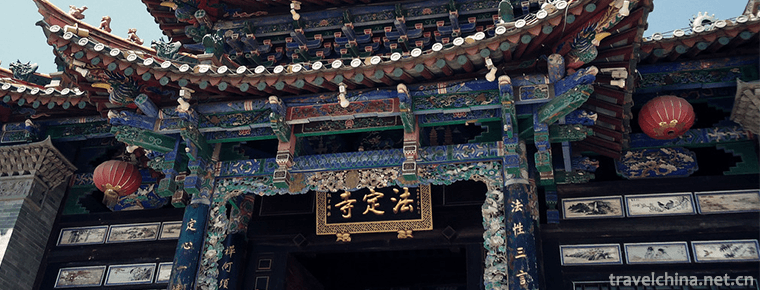
-
Chuanlord Tourism & Leisure EXPO Park
Chuanlord Tourism & Leisure EXPO Park ,Changlu Tourism Xiubo Park, or Changlu Environmental Protection Holiday Farm (hereinafter referred to as "Changlu Farm").
Views: 502 Time 2018-12-12 -
Futian Shangri La Hotel Shenzhen
The second Shangri-La Hotel Group, Shenzhen Futian Shangri-La Hotel, is located in the downtown area of Futian Business District. It can easily reach Shenzhen Convention and Exhibition Center, large s.
Views: 673 Time 2018-12-16 -
Liangfengjiang National Forest Park
Liangfengjiang Forest Park is the earliest national forest park in Guangxi approved by the Ministry of Forestry, covering an area of more than 70,000 mu. Located in the southern.
Views: 174 Time 2019-01-30 -
Three Old People of Korean Nationality
Three Koreans are the traditional folk opera form of the Korean nationality in China. It is composed of three actors who perform in the role of the elderly and merge the forms of Korean opera singing.
Views: 356 Time 2019-04-16 -
Cutting Copper Dus Cutting Copper
Painting inscriptions on bronze pots, smooth lines; beautiful paintings of mountains and rivers on bronze plates, such as immersion... In many people's eyes, Du's bronze engraving, .
Views: 257 Time 2019-05-09 -
Mazu memorial ceremony
Mazu Festival, which originated in Song Dynasty, experienced Yuan, Ming and Qing dynasties and continued to expand and enrich. By the Qing Dynasty, Mazu was named "Tianhou", and the title re.
Views: 204 Time 2019-05-15 -
Shaheteng Array
The rattan array is the only ancient combat technology in northern China. It has gone through hundreds of years since Ming Dynasty. Today, it only exists in Shilipu Village, Shahe City, Hebei Province.
Views: 342 Time 2019-06-12 -
Shulaibao
Shulaibao, a traditional Chinese folk art. Popular in northern China, the source is a means for beggars to ask for money. One or two people sing. Beat with a bamboo board or with a copper bell attache.
Views: 228 Time 2019-06-15 -
Siping Tune
The Siping tune evolved from the flower drum in eastern Henan. After digging and sorting out, it absorbed the tunes of opera critics, Peking Opera, Henan Opera and so on. It gradually perfected and fo.
Views: 112 Time 2019-06-16 -
Tongwei Opera
Tongwei Xiaoqu Opera is a kind of traditional Xiaoqu Opera popular in Tongwei County. In the Ming and Qing Dynasties, Tongwei folk artists absorbed various flavors of Longdong Daoqing, Wanwanwanqiang .
Views: 194 Time 2019-06-21 -
Yi Kezhi
Yi Kezhi is a popular oral literature of poetry style among the Yi people. It is the cultural accumulation formed by the Yi people in their long-term production and life, and has a very long history. .
Views: 157 Time 2019-07-12 -
medical and health work
By the end of 2019, there are 2139 medical and health institutions with 19943 beds. At the end of the year, there were 14351 technical personnel in hospitals and health centers, including 4839 licensed doctors and 6767 registered nurses. The numbe.
Views: 345 Time 2020-12-18
